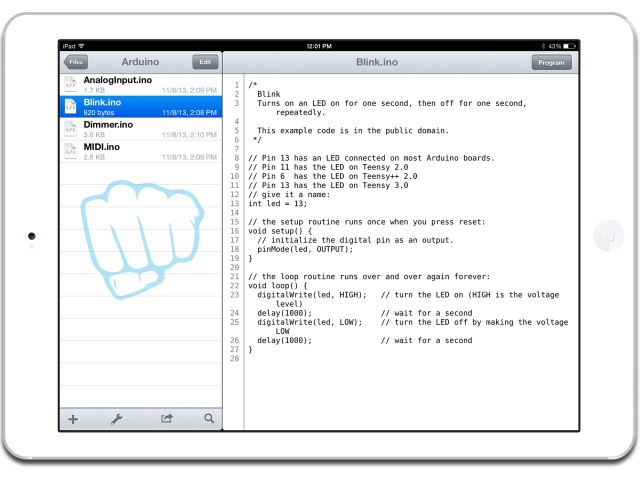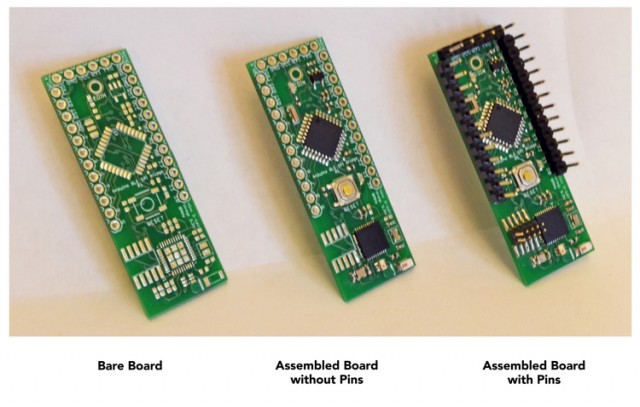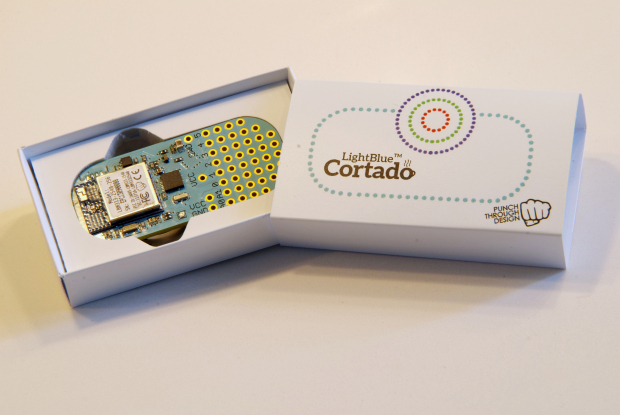PSFK – Adaptive storefront prototype from + rehabstudio on Vimeo.
After years of failing to demonstrate compelling applications, Bluetooth is back with a vengeance. If you haven’t yet used a Bluetooth Low Energy (BLE) device, it’s a completely different experience. Pairing and range and latency work better (the result of years of learning how to make these better). Battery drain is barely noticeable. You can expect BLE to power lots of clever new applications – and it’s nice to see it showing up on DIY electronics.
Oh, yeah, and it can creep the hell out of you, privacy-wise, by making that scene in Minority Report a literal reality, as seen at top. Details of that below.
But these low-power features should also open up cool possibilities for interactive designers, connecting recent devices like the (excellent, by the way) Google Nexus line, iPhone, and iPad.
So, you could be, for instance, writing Arduino sketches on your iPad, which is a whole lot more appealing than the windows at Urban Outfitters suddenly talking to you. See below for the Arduino environment, running without any wires at all with the LightBlue Cortado, a new board for the purpose:

First, the sci-fi future (realized today). The Adaptive Storefront Prototype is a working proof-of-concept produced by Rehab Studio together with online magazine PSFK:
Shop windows don’t have to be a passive experience. As part of PSFK’s Future of Retail Report, we prototyped an interactive digital display that adapts to whoever stands in front of it.
It identifies shoppers using Bluetooth low energy (BLE) and instantly reacts to a set of personal data stored on their mobile device, such as shopping habits and preferences. Shoppers can swipe through personalised content, place items in a virtual shopping cart, and purchase straight from the display.
We think this concept could be deployed outside the context of a store environment, be it street billboards, bus stop signs or car showrooms.
rehabstudio.com/projects/adaptive-storefront-prototype
psfk.com/2013/11/tim-rodgers-adaptive-storefront-concept.html
The project is beautifully implemented by Rehab – a Belfast / London / New York creative house, here represented by co-founder Tim Rodgers.
Second, the geeky present:
There are Arduino shields, like the BLE Shield:
BLE Shield [Red Bear Lab]
Here it is, working with Android:
or iOS:
Even sleeker is this model from Coin, combining BLE with Arduino Mini Pro:

Complete details on their blog:
Coin Introduces Arduino-BLE Developer Kit
Best of all is the LightBlue Cortado, designed from the start around Bluetooth low-energy. It’s an extraordinary board and a huge leap forward for embedded design, physical computing, the Internet of Things – whatever you want to call it, for making computing design pervasive.
MAKE has a great, detailed write-up, complete with Q&A:
An Early Look at the Cortado, the Arduino You’ll Never Plug In

For wearable and architectural applications, it seems huge opportunities for creative design await. That may require visionary thinking previously reserved for, well, people making movie special effects. Get on it.